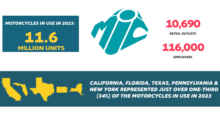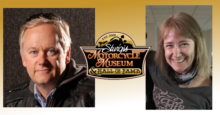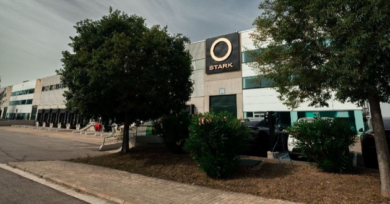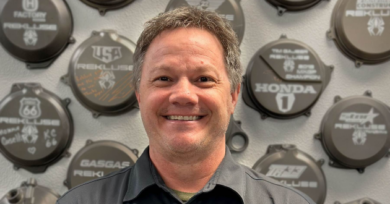Scooter OEMs expect sales increase
Gas prices, economy, acceptance of vehicles likely to play role in spike
Anyone who was selling scooters in 2008 remembers the heydays of only four years ago. The average price of a gallon of gas in the U.S. topped $4, and nearly 77,000 scooters were sold that year, according to a Motorcycle Industry Council report.
With gas prices steadily increasing already this year, and reaching past an average of $3.86 per gallon in mid-March, the question looms: Will 2012 scooter sales look like 2008 scooter sales did?
The answer depends on whom you ask. Rick Pawelka, director of marketing at KYMCO, and Phillip McCaleb, CEO of Genuine Scooter Co., both believe rising gas prices will play some role in the 2012 scooter market, but they don’t expect the spikes to reach 2008 levels.
McCaleb said he expects gas prices to play a role “considerably less than they did in ’07 and ’08, but it would be wrong not to acknowledge it as a contributing factor.”
Stephan Attar, president and CEO of The Auto Moto, has seen gas prices around the company’s Beverly Hills, Calif., headquarters reach above $4.50 per gallon, and he’s confident numbers like that will lead more people to buy a scooter.

“Honestly, I think it will go higher [than 2008],” he said.
After all three companies saw success in 2011, they’re confident 2012 will bring increased sales, with or without increased gas prices. Overall, scooter sales in 2011 rose 11.8 percent to 31,850 units, according to the MIC.
Genuine saw a 40-45 percent increase in sales last year, and McCaleb expects the company will sell out of its inventory this coming year for a 25-35 percent year-over-year increase.
“I’m traveling every week to dealers throughout the country, and I’m watching their traffic, and I’m routinely watching the pipeline of sales through GE, so I know what moves and where it’s moving, and it’s very encouraging,” he said.
KYMCO has already seen a 70 percent increase in wholesale sales year-to-date and a more than 50 percent increase in retail sales.
“I think all signs point to another strong year, another growth year,” Pawelka said.
The Auto Moto reported an increase in sales in 2011 and projects another spike this year.
“I think you can definitely expect an increase in scooter sales this year,” Attar said.
Besides gas prices, the still uncertain economy and lessons learned during the recession are expected to continue to play a role in scooter purchases this year.
“There’s this whole segment of buyers right now that are buying small displacement motorcycles and scooters because it’s economics,” Pawelka said.
In KYMCO’s 49cc and 125cc categories, the value-priced models have been the best sellers as of late, and Pawelka expects that to continue into this year. Scooters are also, in general, less expensive to buy than a car or motorcycle and less costly to own than other vehicles.
“If I’m on two wheels, it’s going to save me X amount of dollars a week, X amount of dollars a month and X amount of dollars a year,” Pawelka said.
Attar said a person who works 5-10 miles from their home can spend nearly $1,000 a month in car payments, insurance and gas, whereas someone who owns a scooter only pays a few thousand dollars for the scooter, about $15 in insurance each month and $40-$50 in gas each month.
“When people look at where they can save in their lives, it’s usually not on rent or on food, it’s usually in transportation,” he said. “I think it really makes sense for people who have been hit by the recession to consider a scooter.”
McCaleb said economics is the reason he expects to see an increase in the sale of larger displacement scooters this year.
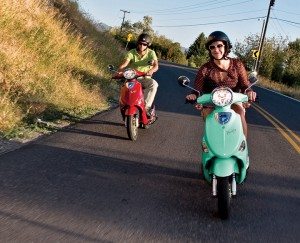
“There will be a little bit of an influx in 250 and above size because of the consistently high gas prices,” he said. “You get the guy that’s replacing the car, not just adding to it.”
All three executives have also seen the number of people interested in scooters increase. One reason is that many of those who joined the market in 2008 have stayed and even upgraded their scooters; some have seen the dozens of lesser brands disappear because of EPA restrictions and other regulatory issues, and even more have learned about the lifestyle from their friends and social media.
“The best advertising is always referrals, and the more new people we can touch that get into and like this product and get into the industry will tell new people and new people, and there will be more people that we haven’t even touched,” Pawelka said.
KYMCO makes a concerted effort to keep in contact with its customers through social media. The company especially focuses on casual riders who aren’t die-hard enthusiasts and don’t attend rallies, letting them know about upcoming events and sending them aftersale surveys.
The scooter customer isn’t easily defined. Genuine’s average customer is 35-55 years old, has some college education and makes about $65,000 per year, but that customer is ever-evolving and has been getting younger. Actresses Vanessa Hudgens, Salena Gomez and Ashley Benson have been seen on Genuine’s Buddy scooters recently while shooting the upcoming movie “Spring Breakers.”
KYMCO’s customers tend to fall in the 18-50 year old range, but they vary widely, as do The Auto Moto’s customers.
“I don’t think they fit in a box,” Attar said.
Because of the variety of scooter customers and the different crowd scooters attract, more dealers are learning that carrying scooters can be beneficial to their businesses.
“We have a few Harley dealers that they don’t sell anything other than Harley, but at the end of the day, when someone comes in and spends $30,000 on themselves, they can justify spending a tenth of that on their wives or their siblings, so they can ride with them,” Attar said. “It’s nice to have something for everyone.”
Scooters may have smaller MSRPs, but some have similar or larger margins, and their sales have the same aftereffects with customers as motorcycle sales.
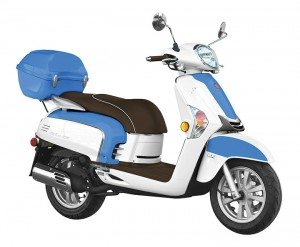
“They’re going to buy the gear, apparel, and you’re going to get another customer; you’re going to get another service customer,” Pawelka explained.
He said scooters are a way for dealers to diversify and attract different niches of customers. Pawelka and Attar both recommend dealers consider adding scooters to their product lines if they haven’t yet.
“Don’t knock it until you try it,” Attar said. “A lot of these dealers have made up their minds that scooters aren’t for them, but they haven’t even given it a try. Until you know your community isn’t open to it, you should try it.”
Gas prices and the economy may fluctuate, but many in the scooter business believe the vehicle segment will only continue to grow year after year, increasing sales and profits for those who get into the industry.
“I would like to think of it at this point that our product and our industry can sell without having unusual situations boost our sales,” Pawelka said.



